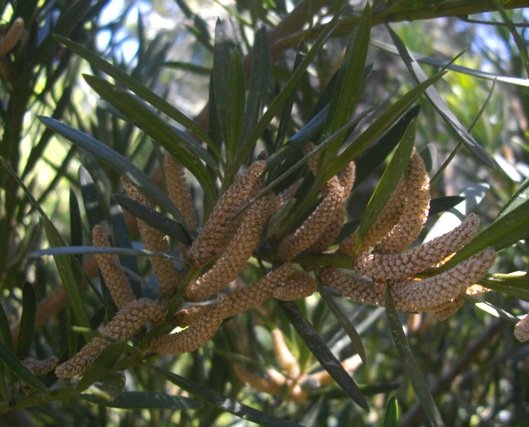Podocarpus elongatus male cones

Author: Ivan Lätti
Photographer: Thabo Maphisa
These male, catkin-like (pollen) cones of Podocarpus elongatus, curving like caterpillars, were seen in October. They grow from leaf axils, quite a few clustering together. The cylindrical cones become 2,5 cm long, 3 mm wide and are beige in colour here.
Many yellowwood species, although not all, are dioecious. So, look for the female cones on the next tree, hopefully not too far from the male one for pollination to occur. This tree is wind pollinated, the pollen grains transported on air currents, some reaching female ovules developing on fleshy receptacles.
South Africans may wrongly think that their few famous local species of yellowwood comprise an exclusive local genus. There are many more, different species not seen here, growing in Australia, New Zealand, Central America, even Asia and elsewhere. The Podocarpus genus of conifers was endemic to Gondwana long ago, the supercontinent from which several of today’s continents had separated. Every continent, upon parting, carried away with it a share of these trees, other plants and animals on their mighty journeys, living and evolving independently, accelerated diversification. The changed land masses boosted the morphing of species due to their unique positioning and climatic fortunes, consequently separate natural histories.
All of this gave each continent, among many other things, its own set of Podocarpus species from what was once one close set of "acquainted" relatives. And still earlier, only one species (Coates Palgrave, 2002; iNaturalist; iSpot; Wikipedia).

